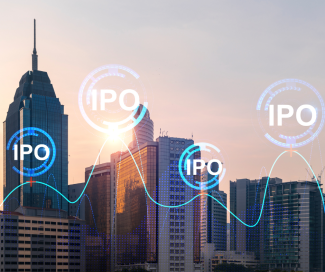
IPO Performance Demystified
Pssst. Do you want to buy a sexy investment?
The Wall Street brokerage community, and brokers themselves, are paid handsomely to “take private companies public,” which is another way of saying “sell the shares that a privately held company has created” to investors, usually making the company’s founders wealthy in the process. For their sales activity, the brokers and their firms will make roughly seven percent of the total proceeds, which, in the case of a $1 billion initial public offering (IPO), would come to $70 million. That’s on top of the shares that the firm keeps for itself or doles out to favored customers. Last year, Goldman Sachs workers, top to bottom, received bonuses (above their salaries) averaging $404,000, and the traders who sell IPOs were paid much more for their sales activities.
When somebody is being paid to recommend a particular investment, there’s a good chance that it isn’t what an objective observer would call the best possible option. Brokers create a mystique around the new shares, talk up the sexy story of the firm’s startup phase and prospects, and collect their commissions on the way out the door. This is not a small business. According to statistics collected by researchers at the University of Florida, between 2011 and 2022, some 1,597 IPOs saw their shares sold to the general public. An astonishing 72% of them were unprofitable at the time of the sale, meaning that their earnings per share were less than $0.
But how do the investors fare from this arrangement? The U. of Florida researchers have collected IPO return data going back to 1980, looking at the aggregate gains or losses of new public companies with annual sales ranging from under $10 million on up to over $100 million, broken out by size. They found that the average first-day return for all IPOs—that is, the change in share value after the end of the first trading day of the stocks—was a sexy indeed 18.9%. For one day. The conclusion is that if you can get your hands on an IPO and sell it later that afternoon, you can generally make a nice tidy profit.
However, the IPOs turned out not to be great long-term investments. After three years, including dividends and capital gains, 9,089 IPOs in aggregate posted returns that were 18.7% lower than the market overall. There were obviously some discrepancies in the returns based on size; the smallest new offerings underperformed by 47.4% (under $10 million in revenues) and 38.1% ($10-$20 million) respectively, while IPOs of firms with over $500 million in revenues underperformed by just 3%. These returns would not be considered even moderately attractive.
Of course, Wall Street brokers are not likely to disclose these gloomy statistics when they’re telling potential investors that the sparkling new IPO could be the next Apple Computer, Microsoft or Netflix, just like they bury their commission disclosures in the fine print, and seldom tell their customers that the other investments they’re recommending are similarly conflicted. In the market environment we live in, investors have to protect themselves from bad advice, and the IPO data suggests that bad investment advice typically doesn’t come cheap.
Sources:
https://www.cnn.com/2022/02/02/investing/bonuses-compensation-wall-street-banks/index.html
https://site.warrington.ufl.edu/ritter/files/IPO-Statistics.pdf

